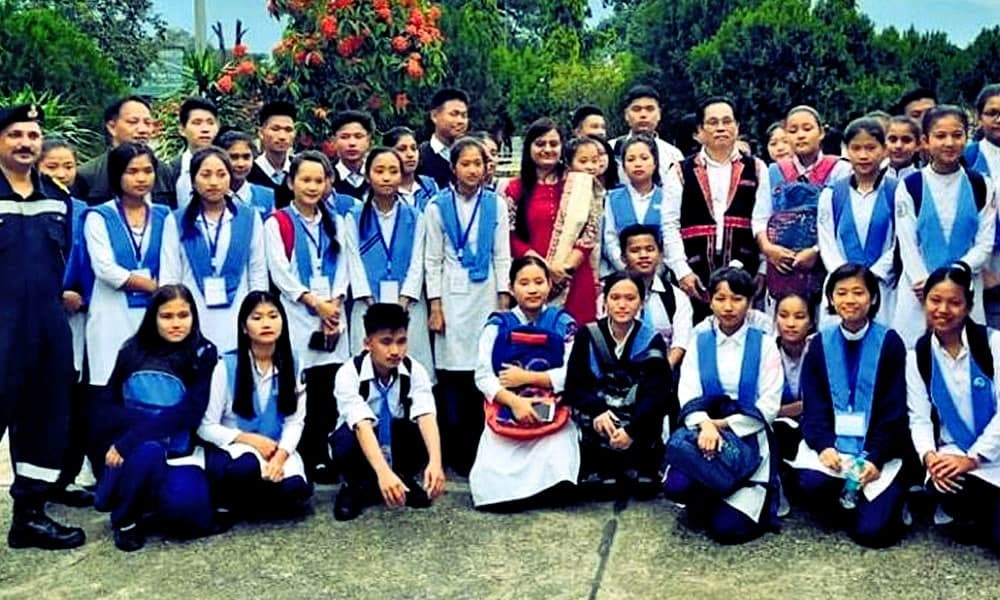
Image Credits: New Indian Express
Locals Help In Makeover Of Schools In Arunachal Pradesh, Enrolment At Record High
Arunachal Pradesh, 2 Dec 2020 10:08 AM GMT | Updated 2 Dec 2020 10:19 AM GMT
Editor : Prateek Gautam |
A free soul who believes that journalism, apart from politics, should stand for social cause and the environment.
Creatives : Rajath
A free spirit who find meaning in life with the virtue of creativity and doing job par its excellence, animal lover and traveller by heart.
Under the initiative, some school buildings, classrooms, toilets etc. were built, and some were either renovated or repaired. Drinking water facility was also provided in schools. This boosting of infrastructure has increased enrolment by 200-300%.
Waking up to a healthy environment is nothing new for the kids living in the East Siang District located in the wild mountainous region of Arunachal Pradesh. But, until a few years ago, many would not be able to pen down their experience of living in such a scenic view due to the lack of education and poor infrastructure at schools.
In 2018, when the authorities decided to involve communities to boost the infrastructure of 119 government schools in the district, things began to change.
The decision started to show excellent results when the villagers started to develop schools in the region, locals took one step forward by contributing towards improving the physical infrastructure of schools while the government walked two steps.
Renovation work in 80 of the 119 government schools has been completed so fare, reported The New Indian Express.
Infrastructure in 69 schools was either built or developed under the convergence of two central and state government schemes.
Former students, villagers and well-wishers came forward to develop 11 other schools.
Officials of the education department led by the District Magistrate Kinny Singh visited each village and talked to the villagers about the importance of education, "We had set up an alumni association in each village. We motivated the villagers to contribute to the schools' infrastructure and send their kids there. Some contributed in cash, some in kind, while others did it physically. Once the schools were renovated, they had a sense of ownership," Singh says, adding that "we also wanted to motivate them to focus on government schools."
A WhatsApp group was created by the district authorities for voluntary contributions and to motivate alumni, villagers and like-minded people.
"The thought that we could motivate people for voluntary contributions made us decide on creating a WhatsApp group. Initially, 40-50 people from other areas were added to the group, followed by the addition of former students from local villages and villagers. The WhatsApp group members from outside would speak about the importance of education.
They would say that it is the responsibility of a community to take care of a school in its area. Soon, help started pouring in," says Jongge Yirang, the Deputy Director of school education.
Around ₹10-12 lakh were collected with the help of the local people and the details were updated on the WhatsApp group.
"The contributors suddenly had a sense of ownership. Communities felt the school renovated in their neighbourhood belongs to them. Now, they try to protect and maintain it. Also, the faith of parents in government schools has increased," Yirang adds.
Under the initiative, some school buildings, classrooms, toilets etc. were built, and some were either renovated or repaired. Drinking water facility was also provided in schools. This boosting of infrastructure has increased enrolment by 200-300%.
"We had launched the project in 2017-18. At that time, if a school had 50 students, it now has 150. The confidence of people in government schools has increased manifold," Yirang says.
In the remote areas of the North-East, parents usually don't send their children to schools and some who do, prefer private over government schools.
"I thought the school where I studied must not suffer. I feel the other contributors had a similar thought. After the infrastructure work, I have noticed a lot of changes, including a sharp rise in enrolment. Many students have left private schools to join the government ones." says Binoymoti Modi Tayeng, a teacher at a higher secondary school.
Also Read: Two Engineers Revive Tribal Arts in Maoist-Hit Bastar, Give Life To Over 50 Tribal Families
 All section
All section














